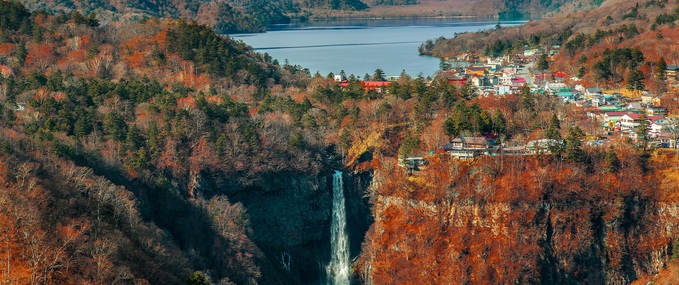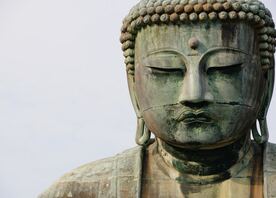Table of contents
Intro
A Brief History of Japan’s National Parks
Why Visit Japan’s National Parks?
Japan’s Best National Parks
Don’t forget when visiting a national park in Japan
Intro
Japan’s national parks are among the most beautiful and diverse in the world. The country also boasts more than 30, which means choosing the very best parks to visit in a single trip is no easy task. Thankfully we are here to help. With your JR pass for unlimited travel on Japan’s domestic rail system in one hand and this essential guide in the other, you will be fully prepared to explore the country’s extraordinary national parks.
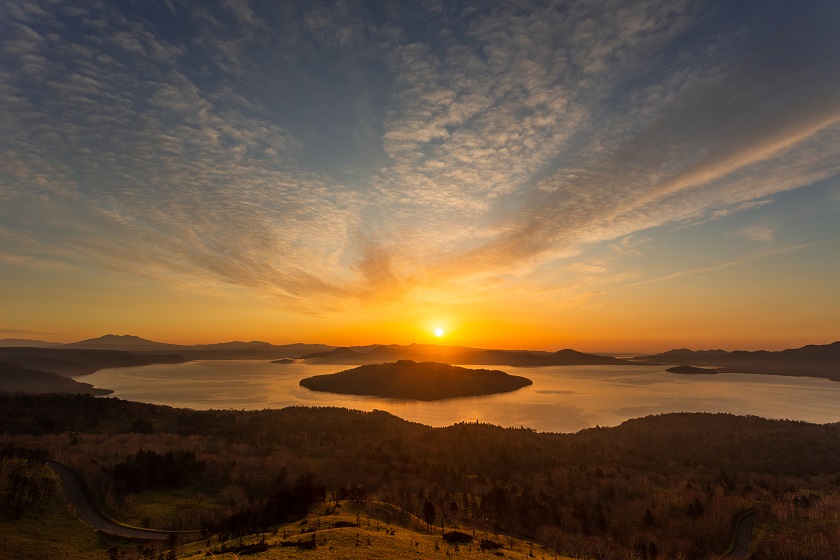
Japan’s national parks are said to be unique in the way they combine public, private and state-owned land. More importantly there are experiences to see, sights to behold and wonders to discover in the country’s national parks that are entirely unique to Japan. From volcanoes, forests, marshes, beaches, coastlines, underwater marine habitats, onsen (hot springs) and snowy mountains, Japan’s national parks are among the most spectacular in the world.
A Brief History of Japan’s National Parks
The National Park Act was passed in Japan in 1931 to recognise growing calls to protect and preserve the country’s unique landscape and geography. Inspired by the designation of Yellowstone National Park in the United States in 1872, Japanese citizens had campaigned for Nikko to become a national park in 1911, but it was not until 1934, following the passing of the act, that the first three national parks – Setonaikai, Unzen and Kirishima – were formally recognised. However, it wasn’t until a revision of the act in 1957 that Japan’s national park structure took on the form it has today. Today, Japan has 34 national parks, from Hokkaido in the north of the island to Okinawa in the south, with a huge variety of landscapes, wildlife, culture and heritage between them.

Why Visit Japan’s National Parks
According to Japan’s Ministry for the Environment, the purpose of the country’s national parks is two-fold: (1) to restrict development projects and other human activities with a view to protecting the exceptional natural landscapes that are characteristic of Japan, and (2) to foster a joyful experience of nature, including an appreciation of landscapes. The key word here is ‘joyful’. The Japanese find joy in nature and you will too when you visit this incredible country and its beautiful national parks.
Japan may be commonly associated with its futuristic mega-cities like Tokyo, but the country’s rich culture and heritage, its stunningly beautiful landscape, and its incredibly diverse geography are an even greater attraction to the millions of international visitors who travel there each year. And the very best of this beauty and diversity can often be found concentrated in Japan’s national parks – the ideal antidote to the big city and the perfect remedy for those in need of an urban detox. If you’re looking to escape back to nature and reconnect with wildlife, fresh air, pure water and greenery, there’s no better place to start.
Japan’s Best National Parks
We have put together a selection of our favourite national parks in Japan, starting in the north of the island and working our way south.
-
Rishiri-Rebun-Sarobetsu National Park
Japan’s northernmost national park is blessed with rugged mountains, beautiful alpine flowers, and stunning coastal views along Rishiri Island and Rebun Island. It is ideal for hiking, nature photography and geology lovers. Take the train from Sapporo to Wakkanai and then the Sarobetsu Service, which runs between Asahikawa and Wakkanai. If you’re also interested in visiting the islands there is also a Heart Land Ferry to Rishiri and Rebun.
-
Shiretoko National Park
Home to a beautiful and diverse array of wildlife, including spotted seals and Sika deer, you can also undertake activities such as brown bear watching in the summer months and whale watching and drift ice cruises in the winter when ice flows down from Russia’s River Amur.
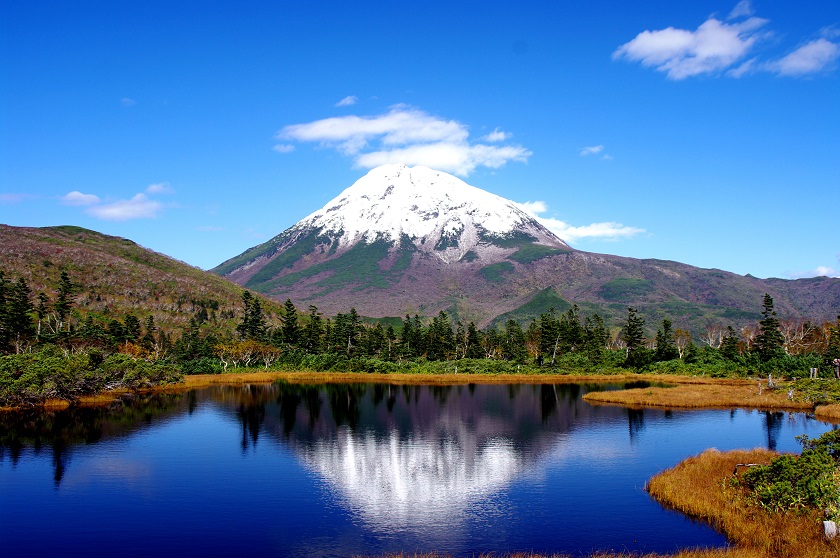
Shiretoko’s unique natural wonders and amazing wildlife have seen it designated as a UNESCO World Heritage Site The nearest train station to the park is Shiretoko Shari Station, which can be reached using the Japan Rail Pass from either Abashiri Station or Sapporo Station.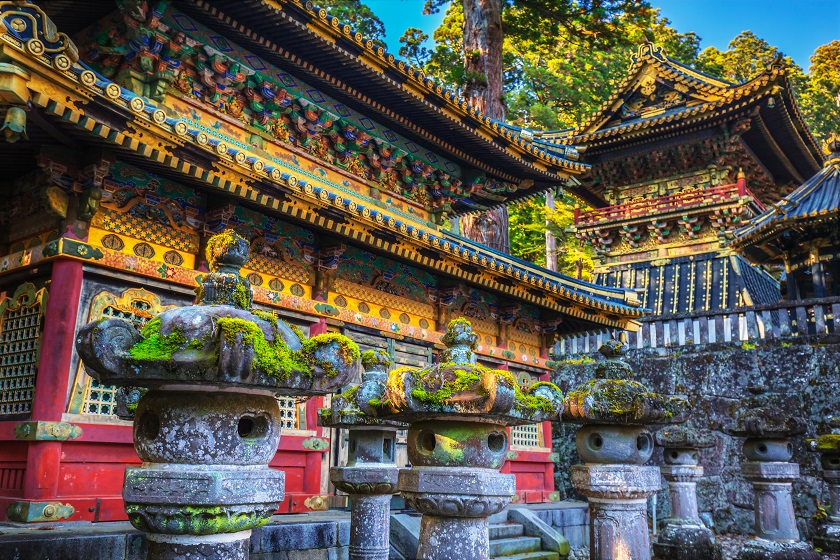
-
Nikko National Park
Nikko is the place to go for history lovers. The shrines and temples of Nikko, including the famous and iconic Toshogu shrine and mausoleum have been designated as a UNESCO World Heritage Site. You will also find Kinugawa Onsen, a hot spring town along the banks of the Kinu River, and the Nasu Volcanic Belt, which gives the area its stunning mountainous landscape. Starting at Tokyo Station or Ueno Station, use the JR Tohoku Shinkansen to get to Utsunomiya Station before transferring to the JR Nikko Line to Nikko Station.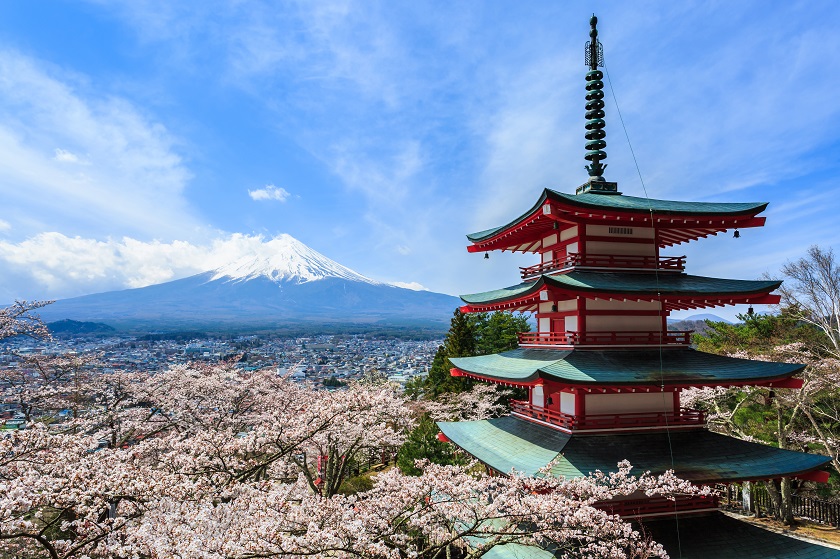
-
Fuji Hakone Izu National Park
Arguably Japan’s most famous national park, Fuji Hakone Izu is, of course, home to Mount Fuji – the beautiful and iconic active volcano. The area has much to offer including Fuji Five Lakes, the famous Chureito Pagoda, Hakone, the Izu Peninsula and the Izu Islands, as well as mountain climbing, peaceful onsen, beautiful beaches, and much more. It’s also one of the more accessible national parks being a straightforward journey from Tokyo. Using your JRailPass, take the JR Chuo Line to Otsuki Station from Shinjuku Station in Tokyo before transferring to the Fujikyu Railway Line to Kawaguchiko Station.
-
Ogasawara National Park
A UNESCO World Heritage Site, Ogasawara National Park is located 1,000 kilometres south west of mainland Japan in the Pacific Ocean and is accessible via a ferry from Tokyo. It’s definitely worth the trip though as you’ll find sub-tropical island with beautiful beaches, crystal clear waters and endemic species. You’ll also be able to swim with dolphins, dive and snorkel.

-
Yoshino-Kumano National Park
One of Japan’s most famous hanami (cherry blossom viewing) locations, this national park becomes hugely popular each spring as thousands of people flock to the area to view the Sakura. Mount Yoshino is covered with an incredible 30,000 cherry trees, and legend has it that the first trees were planted here more 1,300 years ago. You can read all about Visiting Japan to View The Sakura in 2020 in our comprehensive guide. Starting at Tennoji Station in Osaka, travel to Oji Station then transfer to Yoshino-guchi Station, before a final connection to the Kintetsu Yoshino Line Yoshino Station.
-
Yakushima National Park
The heavily forested, atmospheric and beautiful Yakushima National Park, on the southern island of Yakushima, is home to Japan’s oldest trees, including Jomonsugi, an enormous cedar believed to be an incredible 7,000 years old. To reach Yakushima, take the train from Tokyo to Kagoshima via the Tokaido, Sanyo and Kyushu Shinkansen and then catch a high-speed boat to Yakushima.
-
Kerama Shoto National Park
Located in the far south of Japan, in the subtropical islands of Okinawa Prefecture, Kerama Shoto consists of 36 small islands in the East China Sea (only four are inhabited) and is a paradise of white-sand beaches and turquoise waters where you will be able to swim and snorkel to your heart’s content.

Don’t forget when visiting a national park in Japan
- Want to find out more about Japan’s National parks before your visit? Try the official National Parks of Japan website for a list of all 34 parks, current projects and initiatives and much more.
- Japan’s domestic rail system is the best way to get around the country. Use your Japan Rail Pass for unlimited travel.
- Buy PocketWifi to ensure you’re always connected to the Internet while on the move – essential if you’re heading out into the wilderness in one of Japan’s national parks.
- Top tips for your first time in Japan.
- Read up on specific regions of Japan with our super useful guide. You can also buy specific regional train passes if you plan to visit just one or two regions.
- Get your very own tour guide by arranging for a meet and greet at the airport when you arrive via JR Pass.
Inspired and want to read more about national parks in Japan? Read our Top 5 National Parks you must visit in Japan.
